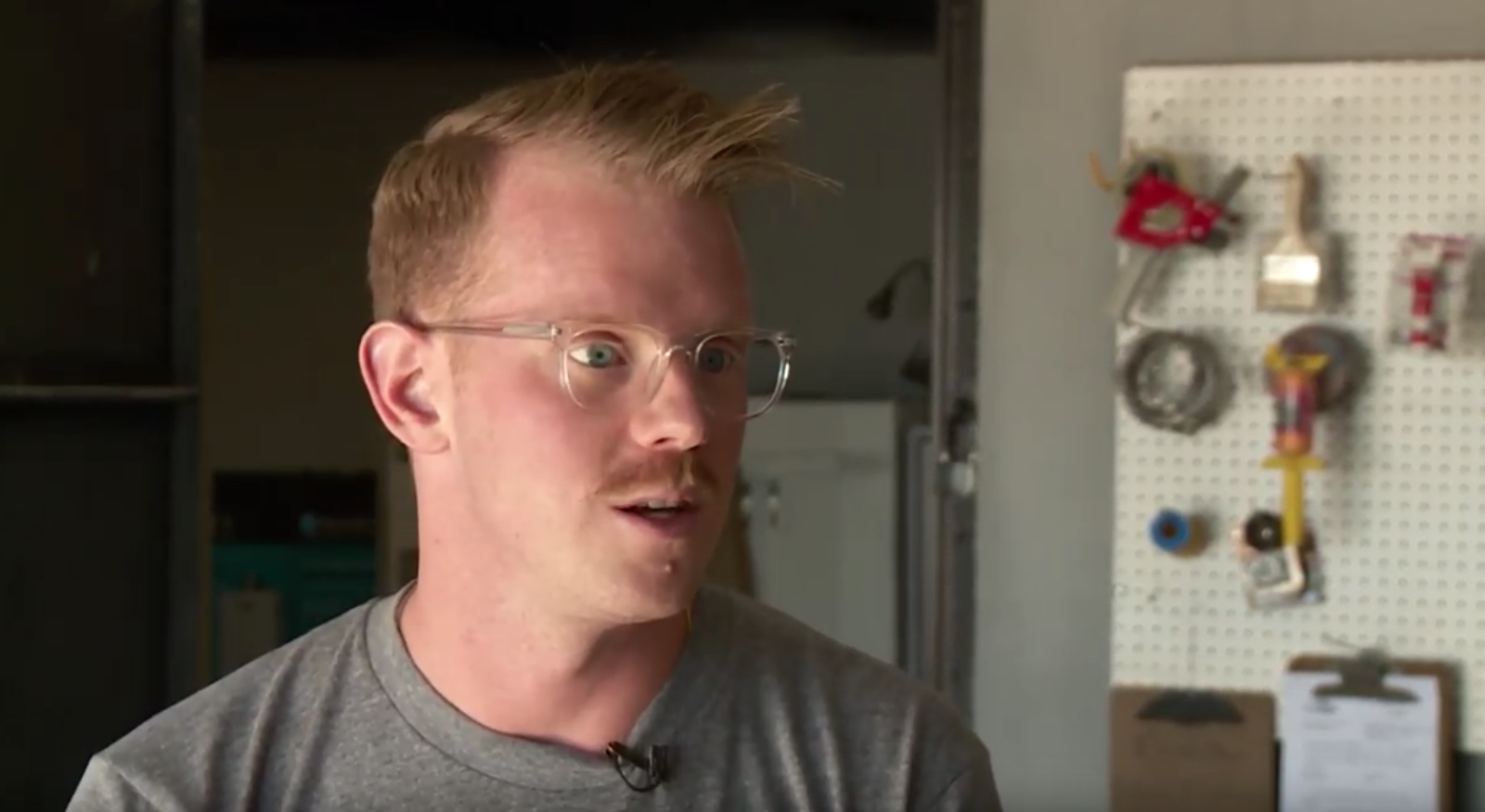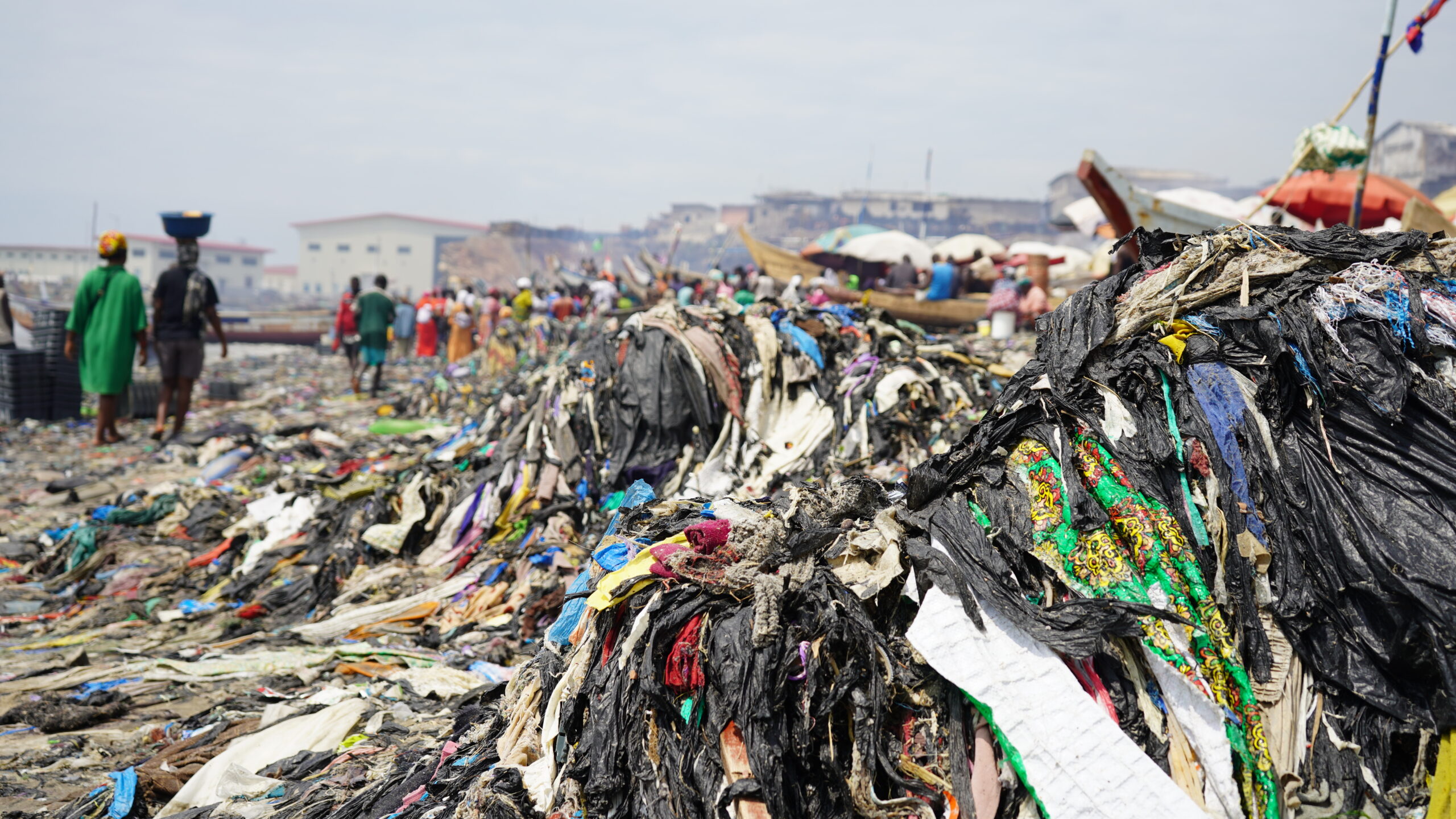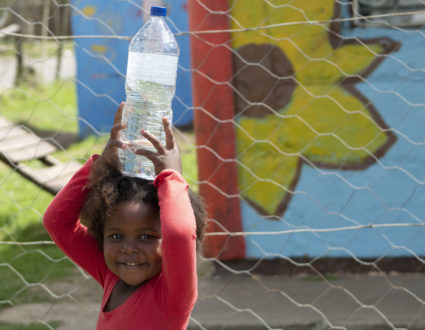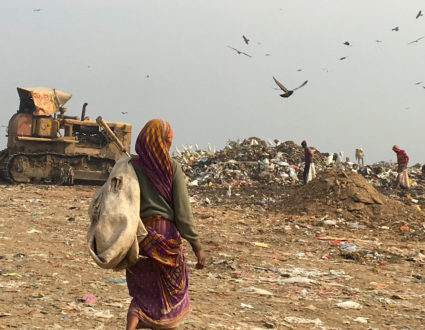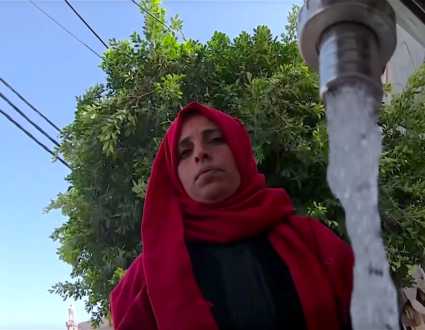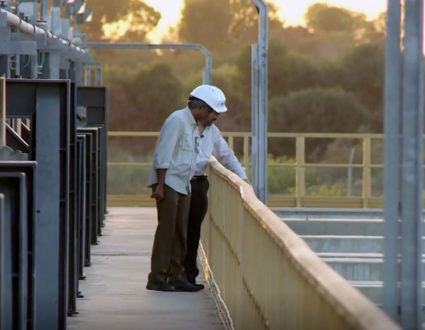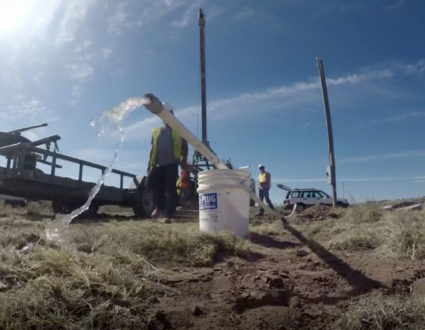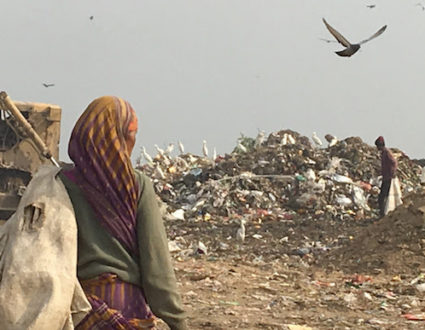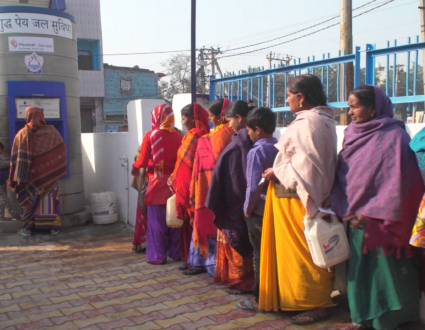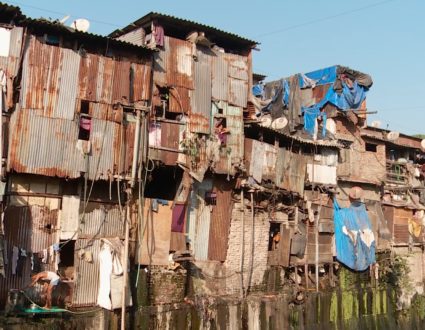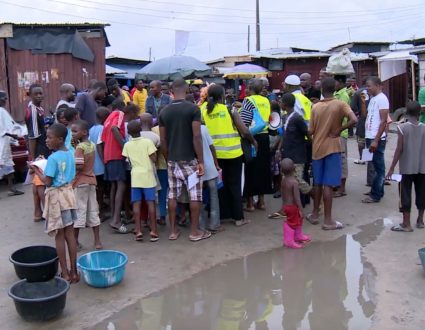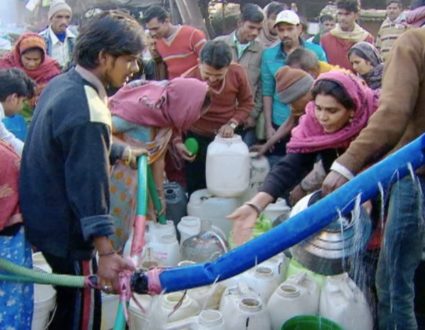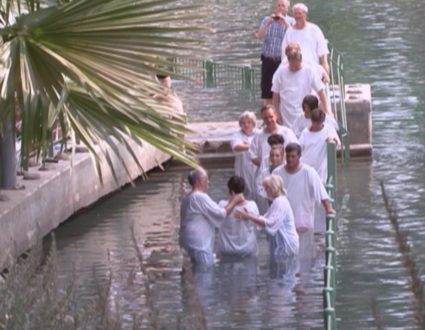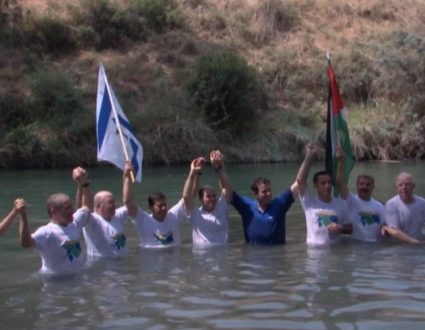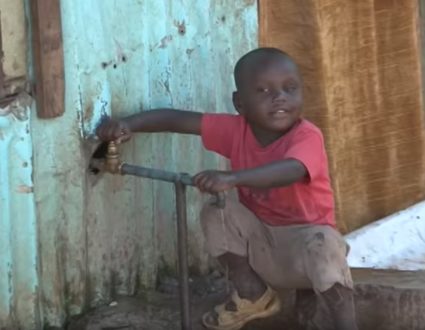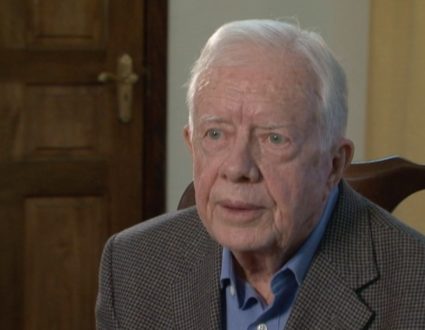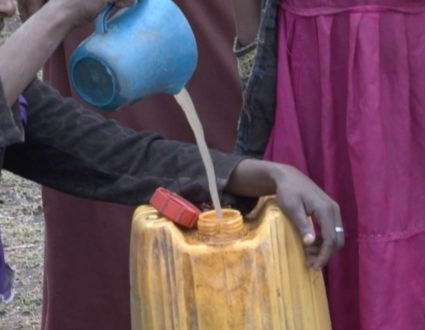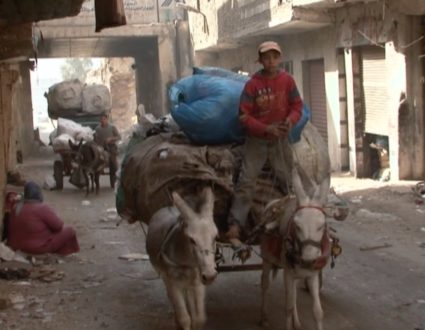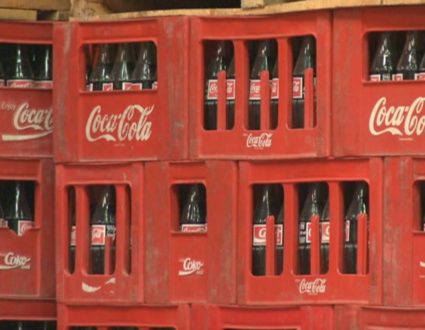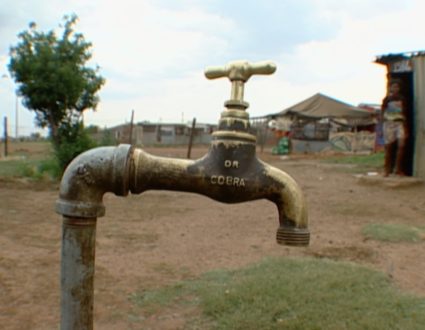Judy Woodruff:
Lack of access to running water is an issue in many developing countries, but it turns out it’s also a problem in the United States.
The sprawling Navajo Nation reservation is the size of West Virginia and it spreads across 13 counties in New Mexico, Arizona and Utah.
Special correspondent Fred de Sam Lazaro traveled to Thoreau, New Mexico, and has this report on new efforts to get on the grid to get the water.
It’s part of his ongoing series Agents for Change and this week’s Leading Edge segment.
Fred de Sam Lazaro:
Darlene Arviso’s truck route takes her to some of the most remote and isolated people in America. She is their link to the world outside, her payload literally a lifeline.
Darlene Arviso:
The kids would be yelling, running to the water truck when I’m coming up to their house.
Fred de Sam Lazaro:
She’s known as the Water Lady in a region where 40 percent of residents have no access to running water.
Many live in such extreme poverty, they can’t even afford large containers. Often Darlene Arviso delivers more than just water. Working with her church and other charities, she helped this family at the onset of last winter.
Darlene Arviso:
I brought them food. I saw the trailer, the small one. We gave out some blankets to cover the window. That time, it was snowing.
Fred de Sam Lazaro:
So, it gets pretty cold up here?
Darlene Arviso:
Yes, it gets very cold.
Fred de Sam Lazaro:
A few miles away, Arviso has a new customer. Tina Bicenti returned to her family’s ancestral land from a trailer park she had rented in the town of Thoreau, New Mexico.
Despite the harsh conditions, she wanted to raise her five children, including 6-month-old twin girls, on the Navajo Reservation.
Tina Bicenti:
I wanted to have my children have more open space for them to run around outside.
Fred de Sam Lazaro:
What they gave up are two of life’s most basic amenities, electricity and running water. Water they use in their new home is carried in from Bicenti’s mother’s home a mile down the road at the other end of their homestead.
Even using the toilet involves a trip to grandma’s house.
Tina Bicenti:
I am planning to look into getting a port-a-potty or a port-a-outhouse.
As for the shower and the bath, I can’t really do anything unless I have a main water line, until I have a septic service and all of that. But, like I said, I can’t get that.
Fred de Sam Lazaro:
Due to a long waiting list, getting connected to the main water line could take up to 15 years, and it will cost more than $12,000. Although Bicenti works full-time, piped-in water is a luxury she cannot afford.
George McGraw:
For a long time, we told those people, just wait. Infrastructure will catch up with you. Well, infrastructure is not coming.
Fred de Sam Lazaro:
George McGraw founded a group called DigDeep that used to work on water projects in Africa, but is now directing its efforts to help some of two million people in this country, like the Bicenti family, who lack access to clean water and sanitation.
George McGraw:
When the backhoe is active, everyone needs to have a hardhat on.
Fred de Sam Lazaro:
That includes 18,000 homes in the Navajo Nation.
Wells are not an option for most homeowners. They’re deep, expensive, and there’s no guarantee of clean water.
George McGraw:
A lack of clean water in the United States does exactly the same thing to families it does around the world. It impacts their health, their ability to hold down a job, to get an education, their ability to spend time with their kids, to play, to have a happy life.
Fred de Sam Lazaro:
DigDeep’s solution is in off-grid systems that don’t require a utility hookup.
Tina Bicenti’s is one of nearly 300 homes being fitted with large water storage systems and solar-powered pumps to bring drinking water directly into the home.
Tina Bicenti:
It’s going to be good, because we don’t have to haul water. We will have it here. It will allow us to give the girls a bath in the sink, because they’re still small, and it will allow the drinking water.
Fred de Sam Lazaro:
As more of these 1,200-gallon cisterns are installed, there’s a need for a more convenient water source.
So, DigDeep is looking for spots to drill more unity wells like this one. It’s a costly and time-consuming process.
The first task when water comes out of this hole is to make sure that it’s free of contaminants. Uranium from old mines is a common one. If it checks out as clean, this well will bring huge savings for hundreds of families who come from miles around here. On average, residents of the Navajo Reservation pay 13 cents for a gallon of water. That is 72 times what a typical rate payer pays in suburban Arizona or New Mexico.
George McGraw:
We spend a lot of our time out here working on water project, but a lot more time in our office in Los Angeles, for instance, trying to convince everybody in America they should pay attention to this problem, care about it, and want to do something about it.
Fred de Sam Lazaro:
Last year, DigDeep did manage to convince some nearby Rotary Clubs, which pledged some $75,000, which will fund about 18 installations like this one Tina Bicenti’s home.
Rotary International has long been involved in clean water projects around the world, but Jim Bissonett of Scottsdale, Arizona, said they never imagine doing this work in their own backyard.
Jim Bissonett:
It’s kind of a shock when you think that people in the United States don’t have running water. We’re going to change the lives of this family dramatically from the water they were carrying in pickle jars to their house actually having running water. And that’s a huge shift for them.
Fred de Sam Lazaro:
They will have a few more small luxuries with the new rooftop, solar panel. It will drive the water pump and also some basic LED lighting.
Tina Bicenti:
Lights. Well, we have power.
Fred de Sam Lazaro:
Projects like these also help train and provide work that can keep local talent local.
Twenty-three-year-old Annie Begay’s skills could fetch a job anywhere in America, but she’s thrilled to be able to stay in the place she calls home.
Annie Begay:
You get to know the family before we put in the systems. You get to know a little bit of their background. And it’s where I grew up, so it’s a good feeling knowing that you’re helping where you grew up.
Fred de Sam Lazaro:
Finally, at the end of a long day, the Water Lady arrived for her big delivery, and Annie Begay tightened the last screws.
It was time to gather around the sink for an impromptu celebration, as Tina Bicenti turned on the faucet, a mundane and giant leap for this family into the modern world that many of her neighbors are still waiting to join.
For the “PBS NewsHour,” I’m Fred de Sam Lazaro in the Navajo Nation.
Judy Woodruff:
Not taking water for granted.
And Fred’s wonderful reporting is a partnership with the Under-Told Stories Project at the University of St. Thomas in Minnesota.
Access Issues
is an issue in many developing countries, but it is also a problem in the United States. Nearly 40 percent of the homes in the Navajo Nation lack running water or sanitation, and many are in such remote areas that they will never be able to connect to a water line. Special correspondent Fred de Sam Lazaro reports on new efforts to bring them basic amenities.
Classroom resources
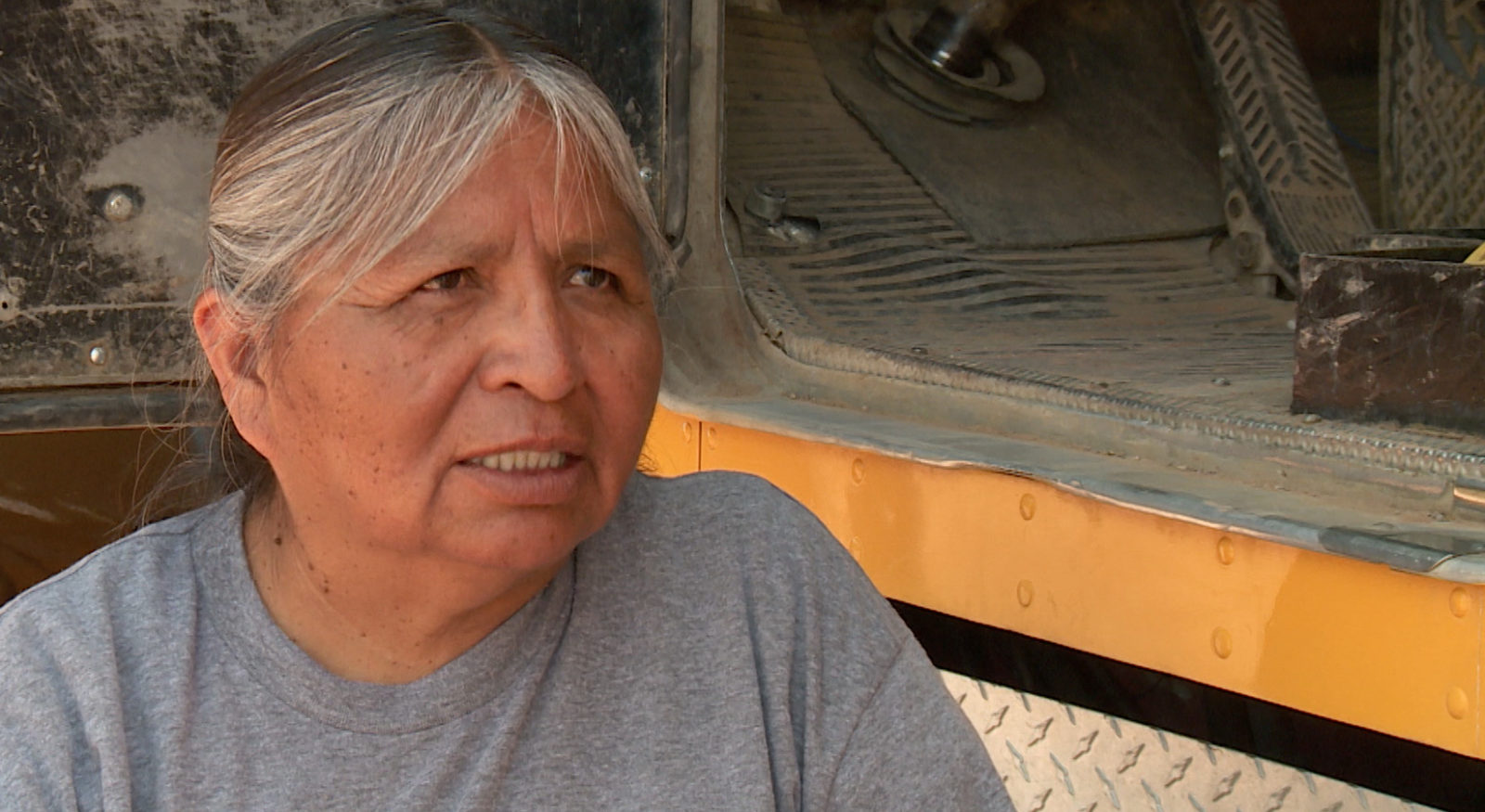
Darlene Arviso, The Water Lady
She’s known as the Water Lady, and her truck route takes her to some of the most remote and isolated people in America. She is their link to the world outside, her payload of water literally a lifeline.
George McGraw
“A lack of clean water in the United States does exactly the same thing to families it does around the world. It impacts their health, their ability to hold down a job, to get an education, their ability to spend time with their kids, to play, to have a happy life.”


